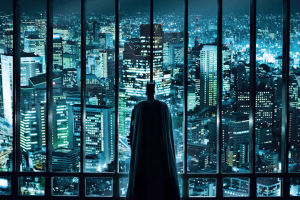Have you ever watched a movie scene that felt incredibly emotional, even though nothing much was happening on screen? Maybe the characters were just walking through a quiet forest, or a slow montage was unfolding.
What made it so moving? More often than not, the secret ingredient is the music.
Film scores are the invisible storytellers that pull us deeper into a movie. They create atmosphere, amplify emotions, and even guide our reactions without us fully realizing it. If you've ever been caught off guard by a wave of emotion during a movie, there's a good chance it was the music at work.
So, how exactly does movie music do this? Let's take a closer look at how composers craft scores that make scenes unforgettable and how they've mastered the art of connecting sound with emotion.
Music Sets the Emotional Tone
Ever noticed how you can almost "feel" a scene coming when the music shifts? That's no accident. In films, the score acts like a mood ring for the audience, signaling whether it's time to laugh, cry, or feel the rush of suspense.
For example, take Jaws. The infamous two-note theme is enough to make anyone nervous. Even before you see the shark, the music primes you for danger. Similarly, think about the uplifting theme in Rocky. The iconic "Gonna Fly Now" isn't just a song—it's the soundtrack to every hopeful moment, every step toward victory.
By using specific instruments, tempos, and rhythms, composers can make you feel exactly what they want you to, whether it's anxiety, joy, or heartbreak. The music doesn't just accompany the story—it actively shapes how you experience it.
Music Deepens the Connection to Characters
Sometimes, a film score isn't just about amplifying a scene, but about helping you connect to the characters. Music can give a character a theme, almost like a personal soundtrack, which helps us understand their journey and emotional state.
Take Star Saga, for instance. John Williams' score is legendary not just because of its grandiose themes, but because of how he ties specific musical motifs to characters. The bold, heroic theme for Luke Skywalker and the dark, ominous tones for Darth Vader both speak volumes about their roles in the story. Every time you hear these familiar melodies, you immediately know who's on screen—and where they stand emotionally.
This technique doesn't just work for big blockbusters. In smaller, more intimate films, a composer might use subtle musical cues to reflect a character's inner world, creating a deeper emotional resonance. Think of a film like The Piano, where the delicate music mirrors the fragility of the main character's experience.
Music Enhances Tension and Surprise
Sometimes, the power of a score lies in what it doesn't play. In a thriller, horror, or suspense film, the music builds tension by playing with silence or using dissonant, unpredictable notes. These subtle shifts heighten the intensity, making the audience feel on edge before a big reveal.
Consider the famous shower scene in Psycho. The screeching violins don't just add to the enphase of the moment—they amplify the terror. Without those sharp strings, the scene wouldn't have the same impact. The use of music in horror or thriller films is often designed to manipulate your emotions, playing with your expectations to create an intense sense of unease or anticipation.
The music becomes a signal to the audience: "Something's coming." This doesn't just apply to horror. Even in action movies, the score builds momentum, preparing you for a big chase or fight sequence.
The Role of Leitmotifs in Storytelling
One of the most powerful techniques in film scoring is the use of leitmotifs—recurring musical themes associated with specific characters, ideas, or emotions. These motifs help the audience make deeper connections to the story and its themes.
Think of Harry Potter and the distinct theme that represents the young wizard. Every time that melody plays, it pulls the audience back into Harry's world, reminding us of his journey and the challenges he faces.
Leitmotifs create a subtle but powerful bond between music and narrative. They give the story a musical identity, so that when you hear a theme reappear, it's a cue that something important is happening. They tie the entire film together in a way that no dialogue or visuals can.
The Power of Silence and Minimalism
Not all film scores rely on rich orchestration or complex compositions. In some films, silence or minimal music is just as effective. A composer might opt for simplicity, using only a few instruments or sparse notes to let the scene breathe.
The wind, the creaking of doors, and the soft footsteps of the characters all carry a sense of dread. The absence of music in this case is just as powerful as an intense soundtrack would be in another film. It leaves room for the audience to feel the weight of silence, emphasizing the tension in the story.
Wrapping Up: Why Music Matters in Movies
It's clear that film scores are far more than just background noise. They are the emotional backbone of a movie, working in tandem with the visuals and story to create an immersive experience. Whether it's enhancing tension, giving depth to characters, or bringing an entire story to life through music, the right score can elevate a film from good to unforgettable.
The next time you're watching a movie, take a moment to listen to the score. You might be surprised at just how much it's influencing the way you feel, even when you're not consciously aware of it. Music isn't just an accessory—it's an essential part of the movie magic that makes us laugh, cry, and cheer.


